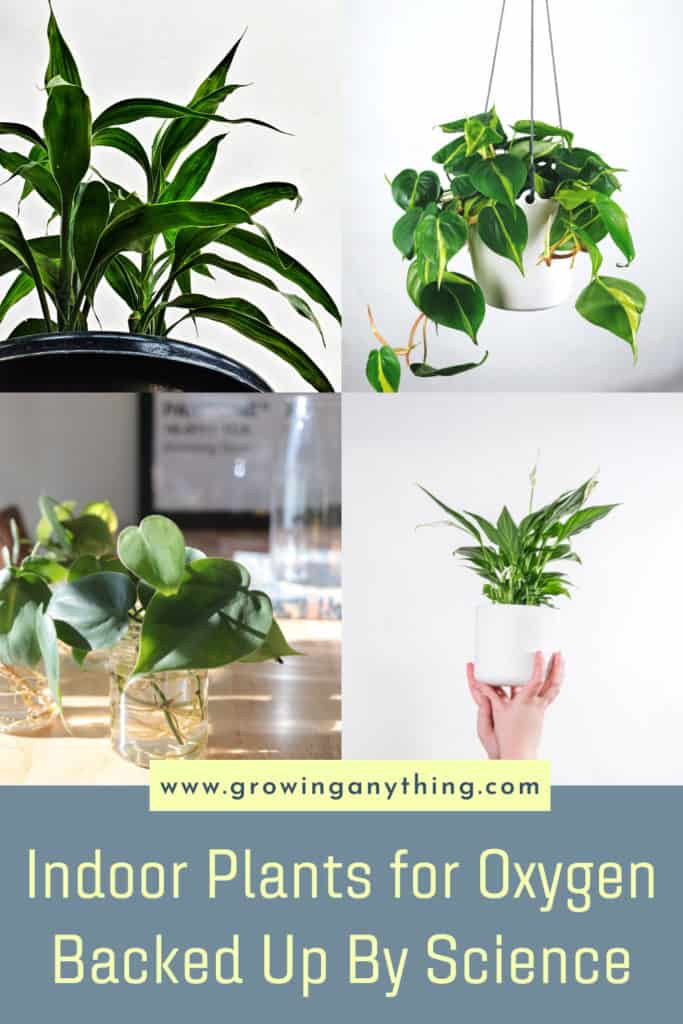Top 22 Indoor Plants for Oxygen
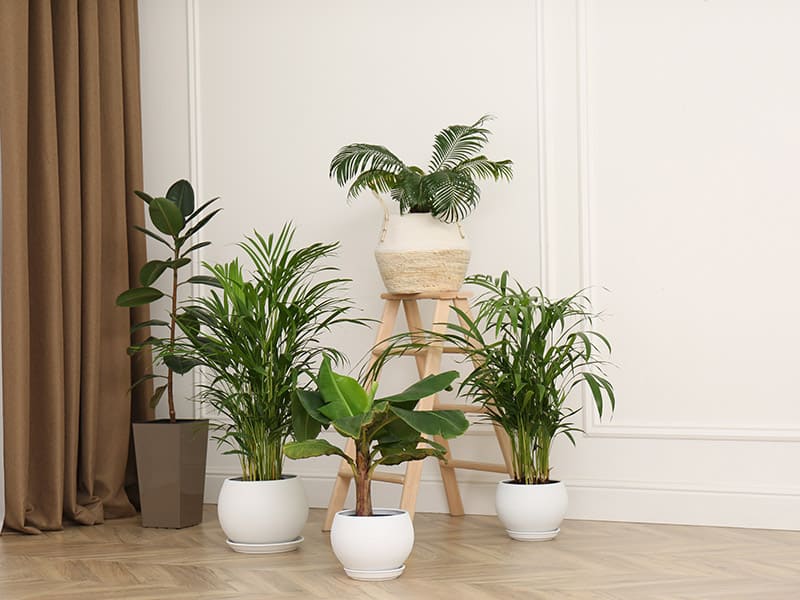
Are you interested in learning more about indoor plants for oxygen? Well, it was about time you focused on breathing better air in your home and growing plants for something other than decoration!
I researched scientific evidence for a comprehensive list of the plants that purify the air in your home and contribute to healthy indoor air!
Plants are potent living creatures, they can remove harmful toxins from the air and act as beautiful and live decorations.
NASA also studied the effects of indoor landscape plants on indoor air quality. Some of the evidence the scientists discovered is surprising! I included the plants NASA found to be most beneficial but also consulted other relevant sources!
Here is the list!
1. Peace Lily
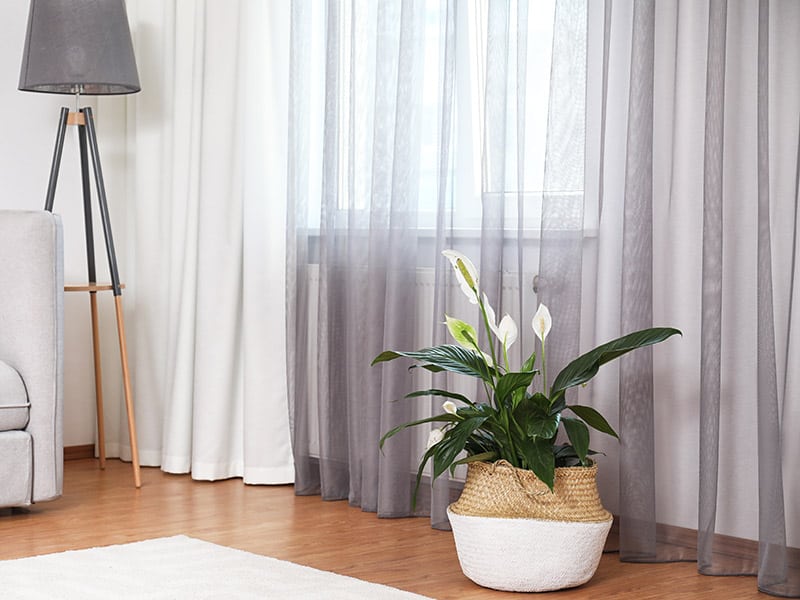
Peace Lily aka Spathiphyllum is one of the best plants to grow indoors! Not only is Peace Lily beautiful and low maintenance, but it can also remove several toxins from the air. Those are benzene, xylene, carbon monoxide, formaldehyde, and trichloroethylene.
Spathiphyllum is easy to grow and suitable for beginners. It needs indirect light to develop glossy foliage. But, Peace Lily can survive in slightly darker conditions, too. Also, the soil needs to remain moist, but not soggy, so excellent drainage is a must.
Peace Lily isn’t picky about the soil type. It is adaptable but grows best in neutral or slightly acidic soil.
Water the plant weekly. Use slow-release fertilizer in the spring to boost the blooming!
Best tips for growing Peace Lily.
2. Dracaena Deremensis
If you are looking for a true statement plant for healthier indoor air, consider Janet Craig Dracaena, scientifically Dracaena Deremensis. It can grow up to 15 feet tall! Dracaena is a beautiful plant to display in large spaces.
Dracaena Deremensis prefers indirect sunlight and needs protection from bright and direct light.
This showy plant doesn’t need complex care. Weekly watering during warm months is optimal. Reduce the moisture in winter to avoid problems with roots.
Dracaena Deremensis is most efficient in removing formaldehyde, xylene, and trichloroethylene.
3. Philodendron
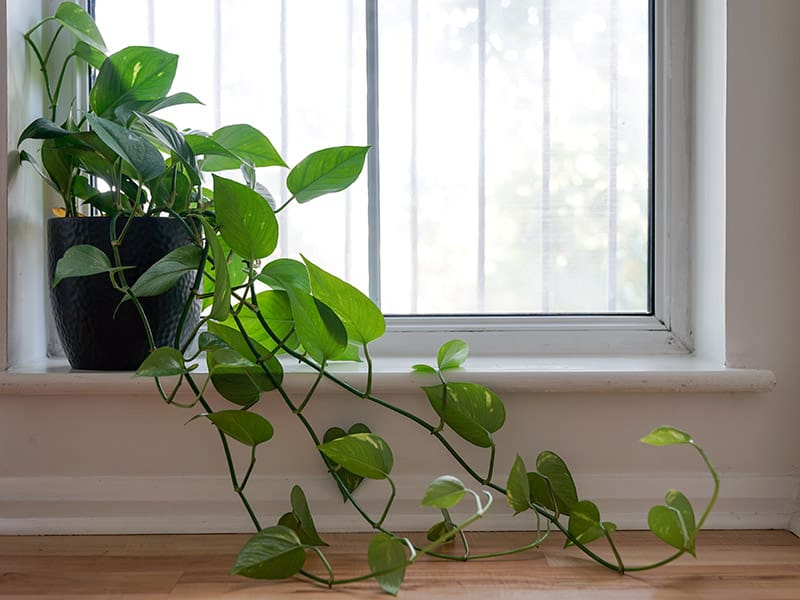
Have you ever wondered why Philodendron is such a popular indoor plant? It is because of the luscious appearance, easy-going nature, and great benefits for the indoor space! Philodendron can remove formaldehyde from the air and trap dust.
Many people also claim that Philodendron calms them because they associate its rich green color with buoyancy and relaxation. Overall, Philodendron is simple to look after – moderate watering and bright, filtered light are the only requirements.
4. Devil’s Ivy
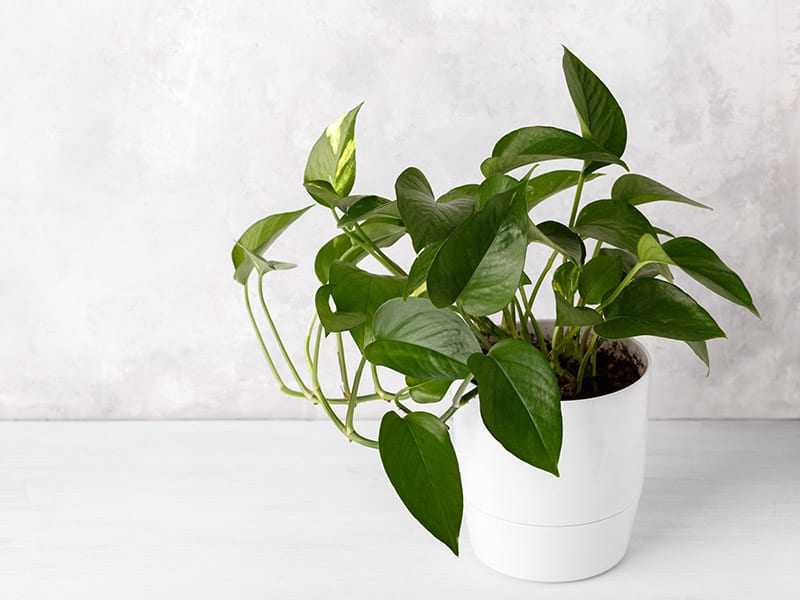
Devil’s Ivy is also known as the Pothos plant. The scientific name is Epipremnum aureum.
Whatever you decide to call him, you won’t regret placing this cascading green gem in your space! Pothos can fight most toxins in standard households and is easy to grow.
You can display Pothos in regular containers or hanging baskets. Interestingly, Pothos also grow well in water. Xylene, benzene, and formaldehyde are among the most common toxins removed by Pothos. It is also great in absorbing the dust from the air.
5. Boston Fern
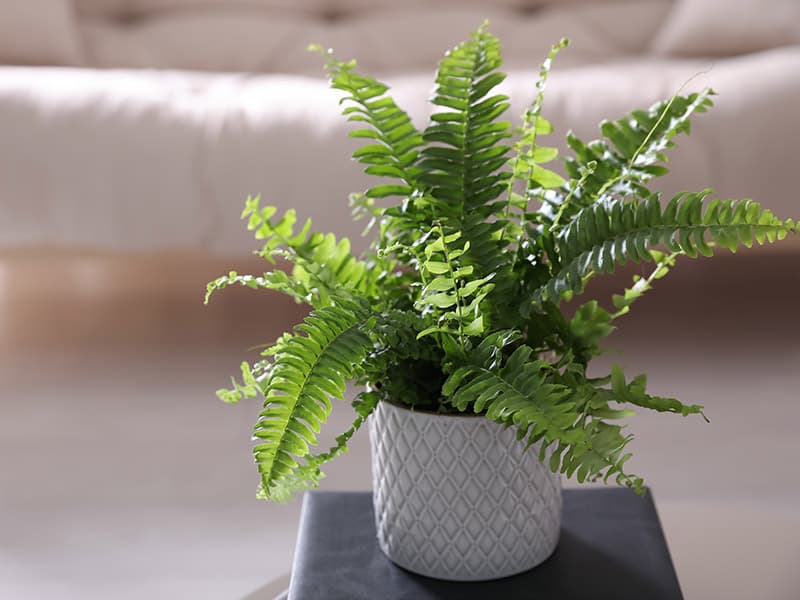
Boston Fern is easy to grow and has a beautiful visual impact on the space. The plant features fronds shaped like swords which look beautiful in hanging baskets.
Boston Fern needs a humid environment to grow. Consistent moisture is also a must, so your fern will be happy with regular misting and moist soil. Put your Boston Fern near the window, where the plant can receive bright, indirect sunlight.
When the winter comes, you have to cut back Boston Fern to induce the regeneration process in the spring. The scientific name of the plant is Nephrolepis exaltata v. Bostoniesis. It is best in removing formaldehyde and xylene from the air.
Ways to prevent killing your Boston Fern.
6. Pineapple Plant
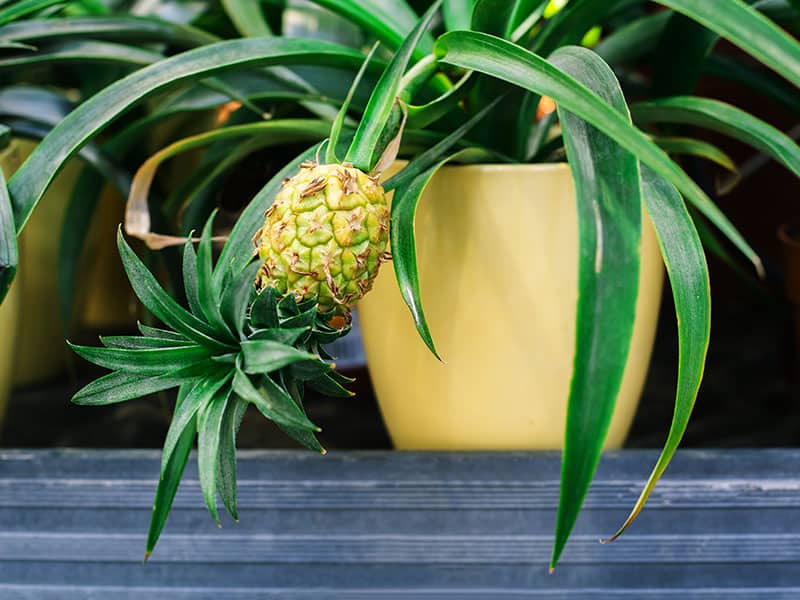
If any of your family members have snoring issues, trust NASA and use the Pineapple plant to help them sleep calmly! Jokes aside, the Pineapple plant boosts indoor air quality and contributes to oxygen in the air.
Therefore, it can help improve sleep quality! The Pineapple plant doesn’t remove toxins, but it contributes to oxygen-rich air, which is why it deserves to be on my list!
You can grow a Pineapple plant as a houseplant in your home. Pineapple needs very little water. The most challenging part when taking care of the Pineapple plant is ensuring consistent warmth. Pineapple is cold and frost-sensitive, but it can also get harmed from the sudden draft.
7. Dwarf Date Palm
Phoenix Roebelenii or Dwarf Pygmy palm is one of the cutest palms to choose for your home. It can grow in partial shade and with minimal maintenance.
Pygmy date palm usually reaches between six and ten feet in height. It can remove xylene and formaldehyde from indoor air and provide a beautiful tropical vibe to your home.
The palm needs between five and ten feet to reach its full maturity. Compared to other palms, Pygmy palm is a relatively faster-grower. Therefore, it enjoys fantastic popularity from gardeners looking for a quick way to decorate space and improve air quality!
8. English Ivy

Hedera helix or English Ivy is one of the most popular climbing plants. You’ve probably seen it on trees, trellises, and walls. It looks charming on every structure, and as NASA claims, English Ivy is a number one air-purifying indoor plant.
Even though most people grow English Ivy outdoors, you can grow it in your living room as well! Pick a hanging basket and propagate English Ivy in water. It only takes several days to propagate the Hedera helix.
English Ivy is most praised for its capabilities to remove formaldehyde and benzene alongside its beautiful appearance.
9. Ficus Benjamina
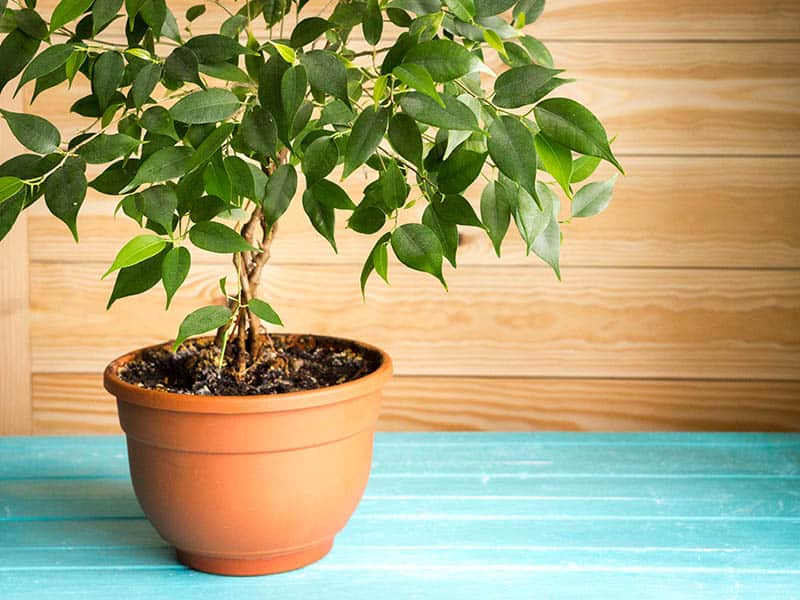
Ficus Benjamina or Weeping fig comes from Southeast Asia. In the USA, many people grow it indoors.
Ficus Benjamina needs a bright spot and protection from direct light. You can leave the soil dry completely between waterings for the best results.
Weeping fig removes benzene, formaldehyde, and trichloroethylene.
Benjamina is easy to grow, but it can seasonally suffer from leaves dropping. If that happens, change the position of the plant and provide more sunlight to your Ficus Benjamina. Also, increase the humidity in the room with a humidifier or regularly mist the plant.
10. Spider Plant
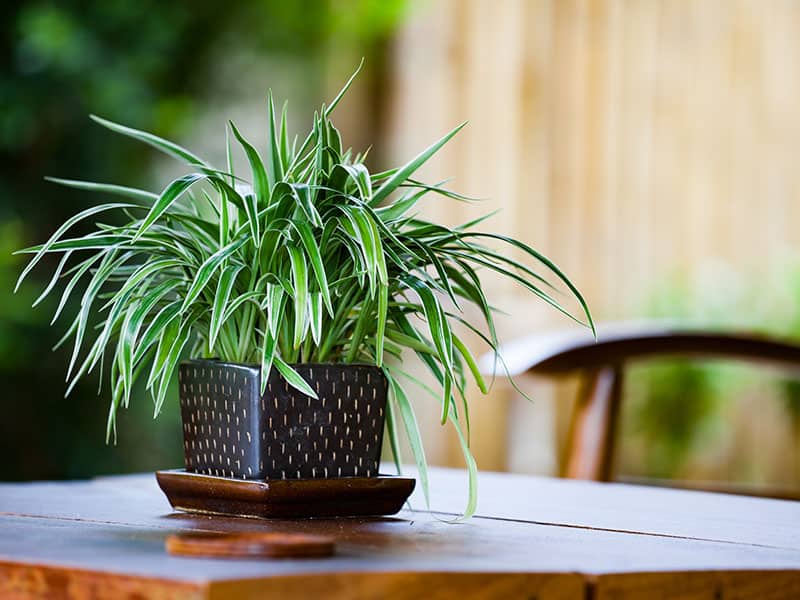
The Chlorophytum comosum or Spider plant is a perfect beginner plant! It can be hard, almost impossible to kill!
Spider plants adapt to a variety of conditions. It can survive low sunlight, drought and cold.
You can also propagate the plant through spiderettes, small shoots of baby Spider plants that appear regardless of the care.
Spider plants provide great visual interest to indoor space and remove xylene and formaldehyde from the air.
11. Aloe Vera

Aloe Vera has many benefits, including anti-inflammatory properties, wood regenerations, and air purification.
Aloe Vera needs warmth and sunlight to thrive. It is very efficient in removing formaldehyde, but Aloe Vera can develop brown spots on the foliage when exposed to too many toxins in the air.
You can also use Aloe Vera to treat sunburns and mix it in various homemade hair and skin masks. In addition, Aloe Vera looks attractive and is easy to grow. Don’t forget to add perlite to the potting mix to improve drainage.
Tricks to grow massive Aloe Vera leaves.
12. Areca Palm
Chrysalidocarpus lutescens or Areca palm is a perfect choice if you have a large living room or you want to decorate an empty hallway. In addition, Areca palm is known for its toxin-elimination features and mild nature. The palm is safe to grow around dogs and cats and needs only simple care.
During summer, Areca palm needs watering several times per week. When the temperatures drop, reduce the watering and let the soil dry between drinks.
If you need a powerful toxin-eliminating plant, don’t skip Areca palm.
Benzene, xylene, carbon monoxide, formaldehyde, trichloroethylene are common household toxins removed by Areca palm.
13. Rubber Plant
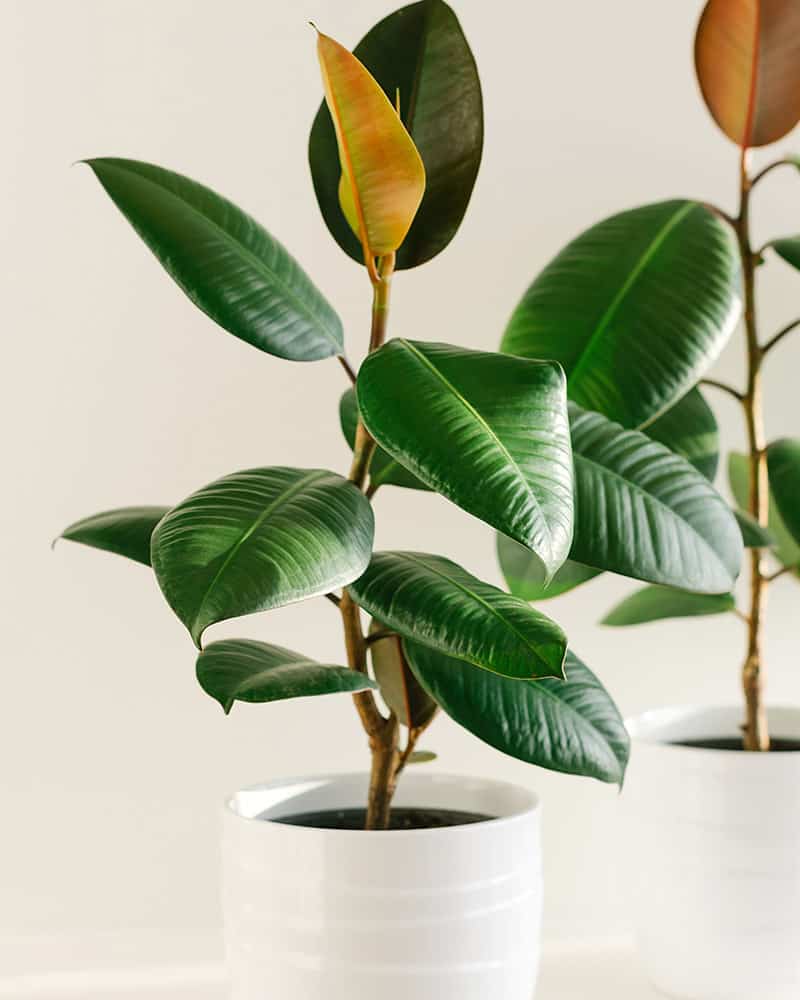
Ficus elastica or Rubber plant is native to India. It is easy to recognize plants by the beautiful thick evergreen foliage.
You can start growing the Rubber plant in a small pot, in bright light. Protect the plant from harsh, direct afternoon sunlight and water weekly. Once the plant overgrows the current pot, gently repot it to a bigger container. Repeat the process when your Ficus elastica gets the characteristic tree shape.
Even the juvenile Ficus elastica plants are powerful in removing toxins such as xylene, benzene, formaldehyde, and trichloroethylene from the air.
14. Snake Plant
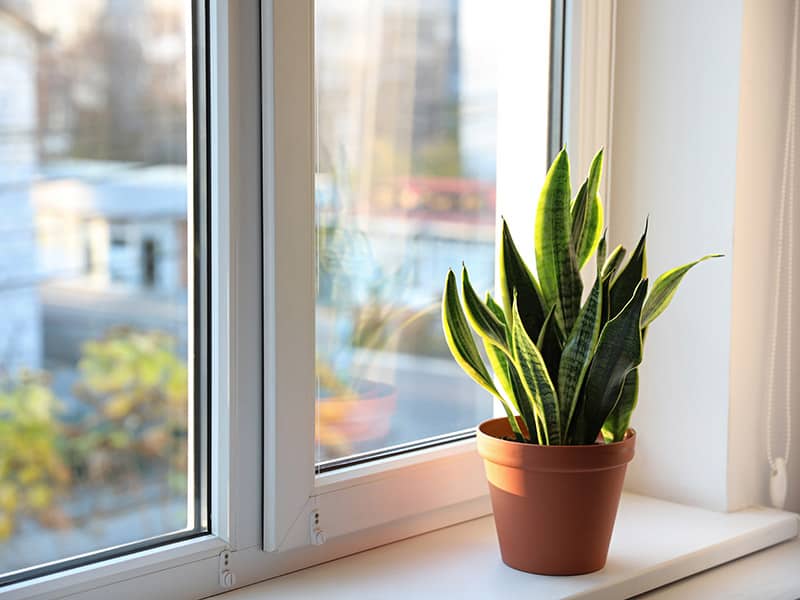
Sansevieria trifasciata has many names including Mother-in-Law’s Tongue and Snake plant. The Snake plant is succulent and grows up to 6.5 feet in height. It is a hardy plant, which doesn’t need human interference to thrive.
You can put the plant in a humid or dry room, bright or partial shade, and the Snake plant will still develop and look beautiful.
The only thing to keep in mind when taking care of the Snake plant is to avoid overwatering. Because it is succulent, the Snake plant doesn’t need a lot of moisture to thrive.
It removes most common household toxins, such as xylene, formaldehyde, benzene, and trichloroethylene.
15. Chrysanthemums
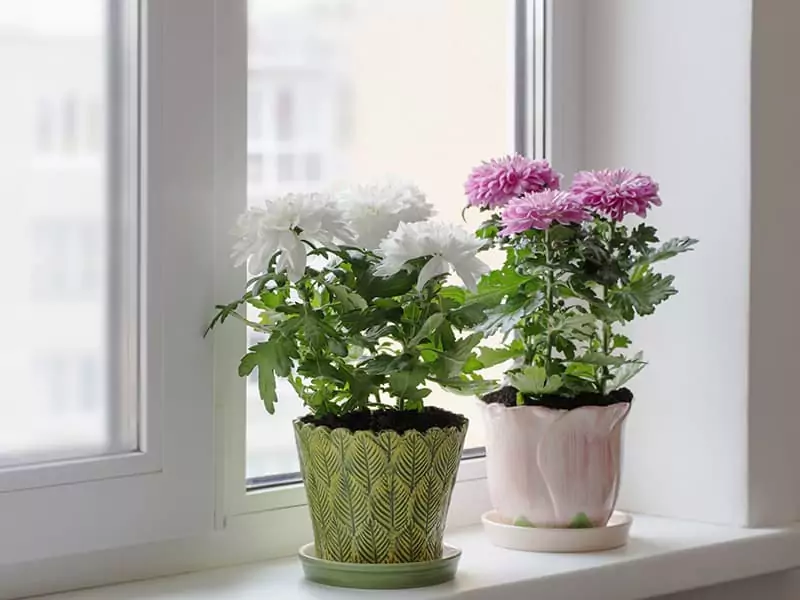
Chrysanthemums are many people’s favorite parts in floral arrangements. But, these beautiful flowers are also potent natural air purifiers. They will contribute to your home interior decor and improve the air you breathe by removing ammonia, xylene, benzene, and formaldehyde.
Chrysanthemums are tricky to grow indoors. However, your efforts will pay off.
Keep the Mums in a room with excellent air circulation and provide them with bright, indirect sunlight. Only water your Mums with warm water and allow the top two inches of soil to dry between waterings.
16. Bamboo Palm
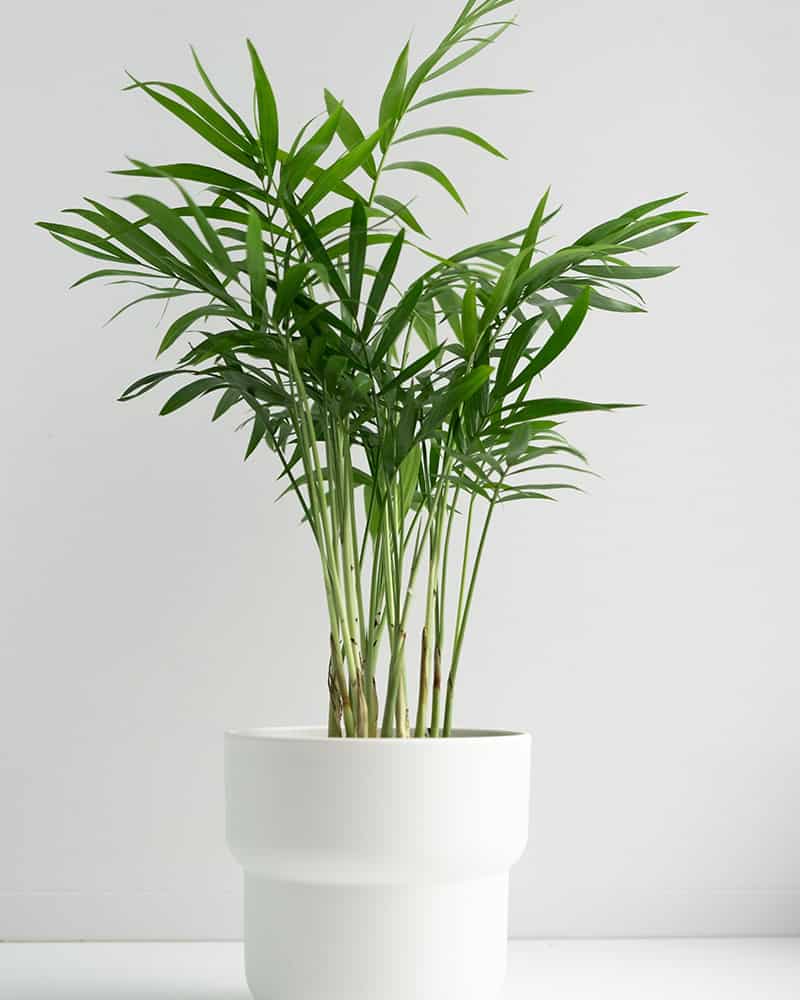
Bamboo palm or Chamaedorea seifrizzii is a large-growing palm with an average height between four and 12 feet. It is most efficient in removing formaldehyde, trichloroethylene, and benzene from the air.
Moreover, the Bamboo palm is a pet-friendly plant and a rare air-purifying plant that loves a full sun location!
Filtered water for watering and average room temperature is sufficient for the Bamboo palm to thrive.
17. Kentia Palm
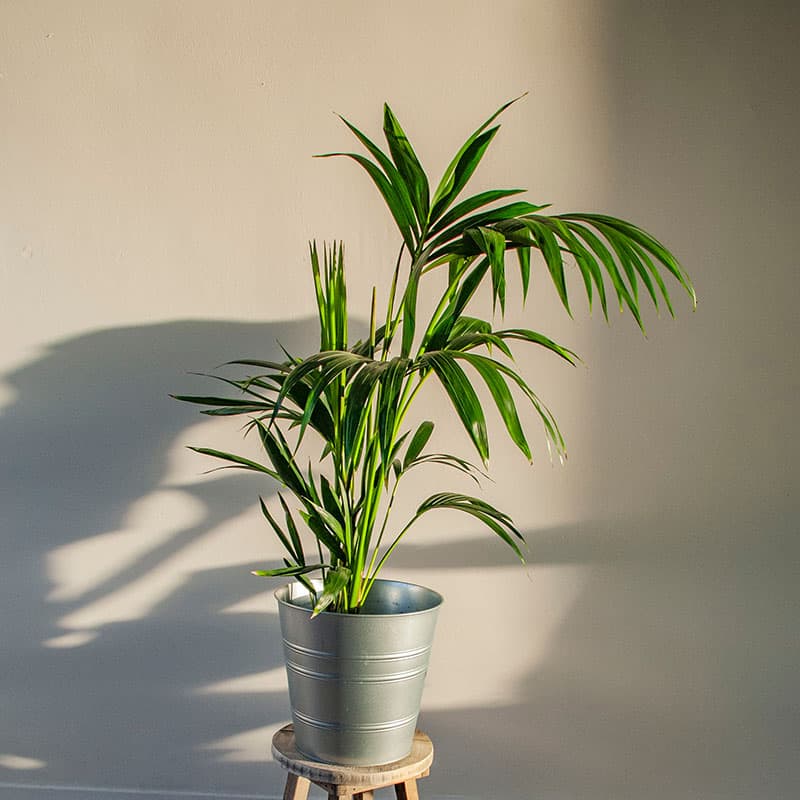
Kentia palm is a powerful air purifier. It is also an easy palm to grow in most indoor conditions. Kentia’s palm prefers partial shade and doesn’t do well during dry spells. The optimal watering schedule for Kentia palm is once a week.
Add standard houseplant fertilizer to Kentia palm once a month from May to October.
Also, to ensure beautiful and glossy foliage on your Kentia palm, regularly dust the palm! The palm removes formaldehyde from the air in all environments.
18. Gerbera Daisy
For most people, Gerbera Daisy or Gerbera Jamesonii is the most attractive plant with benefits for the indoor air. Gerbera Daisy produces oxygen at night and removes harmful chemicals from the air. Those are benzene and trichloroethylene.
If you suffer from sleep apnea or any breathing disorders, you can put Gerbera Daisy in the bedroom to improve sleep quality.
Caring for Gerbera Daisy is simple. It needs bright sunlight in warmer parts of the year. During the winter, your Gerbera Daisy prefers indirect light. Keep the soil moist, but not soggy and you will enjoy all the benefits from your Gerbera Daisy.
Grow spectacular indoor Gerbera Daisies with this care guide.
19. Lady Palm
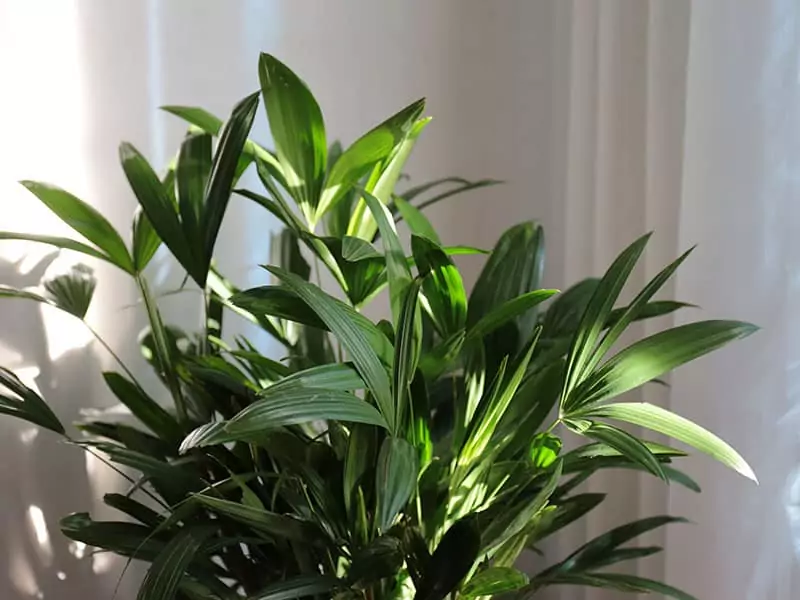
Lady palm aka Rhapis excelsa grows without issues in the temperature range between 60 and 80 degrees Fahrenheit. It removes ammonia, xylene, and formaldehyde from the air.
The Lady palm thrives away from direct sunlight. The ideal position for the plant is close to the east-facing window.
Wait for the top inch layer of soil to dry before you water the plant.
Even though the plant isn’t picky about soil type, Lady palm prefers acidic to neutral soil.
20. Kimberly Queen Ferns
Nephrolepis obliterata is the botanical name of the Australian native fern called Kimberly Queen Fern. People commonly grow Kimberly Queen Fern outdoors, but it can also be a great houseplant, especially for beginners.
You don’t need to cut back the fronds on Kimberly Queen Fern. In fact, all the plant demands are regular watering in summer and occasional fertilization.
This low-maintenance plant is best at eliminating formaldehyde and benzene from the air.
21. Chinese Evergreen
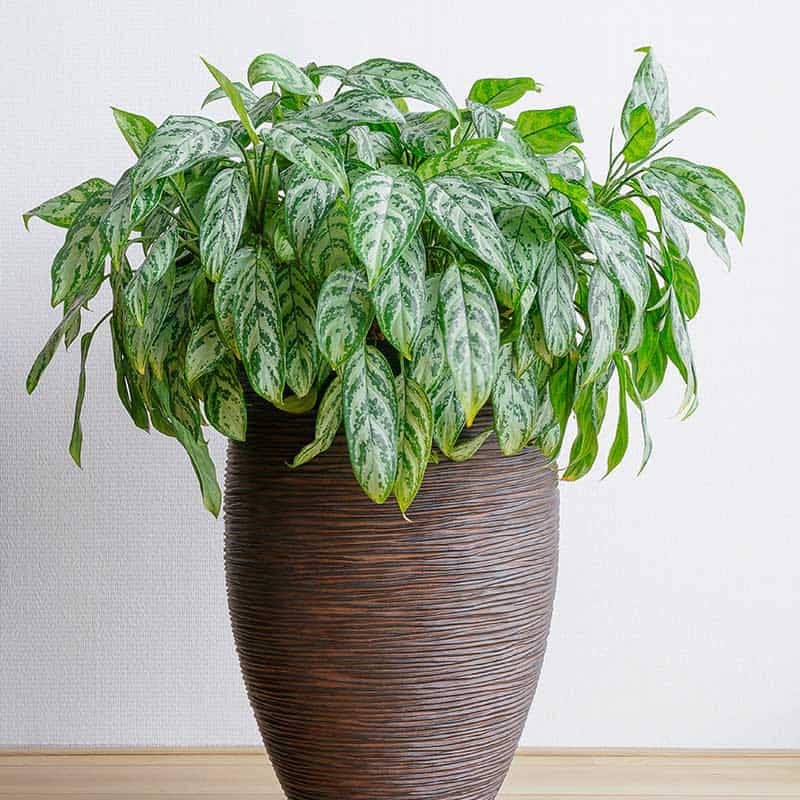
Aglaonema or Chinese Evergreen is a popular indoor plant. It can adapt to various indoor conditions but grows best in a humid and warm environment with medium sunlight exposure.
Aglaonema also needs well-draining soil to ensure the roots remain healthy and thriving.
At the beginning of the spring, you can fertilize the plant to induce healthy development. Repeat the process in the middle of the summer.
Lastly, Aglaonema contributes to better air quality by removing formaldehyde and xylene.
22. Flamingo Lily
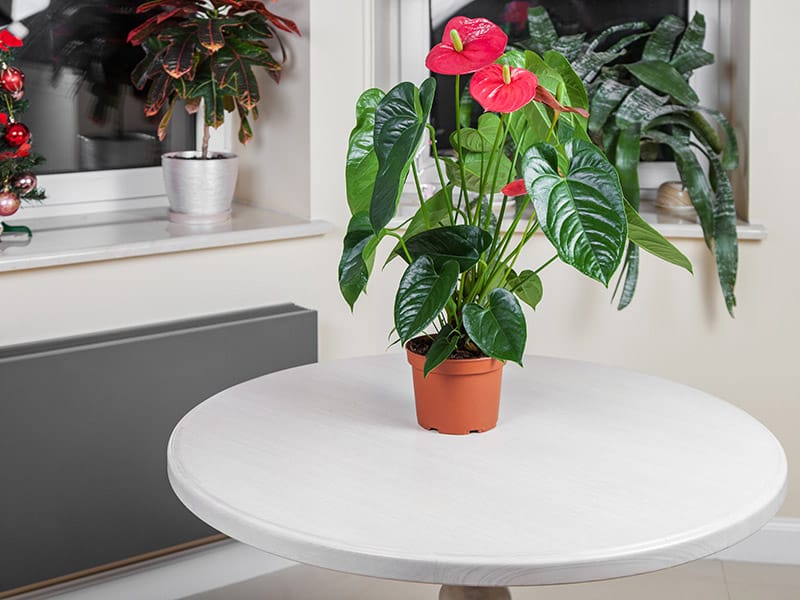
Flamingo Lily or Anthurium andraeanum is a statement plant in every plant collection. It adds a beautiful pop of color to every space and turns heads with its unique and glossy blossoms. Anthuriums are also praised for their long blooming season.
Some well-cared Anthuriums bloom for almost 300 days of the year.
The ideal growing conditions for Anthuriums include high humidity and bright, indirect sunlight. Flamingo Lily will thrive in a kitchen window or the bathroom, but you can also place the pot anywhere else and regularly mist the plant.
Anthuriums eliminate ammonia, toluene, xylene, and formaldehyde from the air.
Choose Bold Plants With More Than One Benefit
The mentioned indoor plants for oxygen are not only great for air purification, but they also make a stunning decoration for every room. Palms and ferns are striking and flowering plants add a beautiful dose of color!
Additionally, the majority of these plants, except for Gerbera Daisy and Chrysanthemums, are low-maintenance. You can grow them even if you are a complete rookie in the gardening world!
I prefer Dracaena in my home. What about you? Which plant will you choose to improve air quality in your home?
Come back for more interesting articles about plants!
